What are the 5 standard measuring spoon sizes?
Each spoon in our homes holds a special place on our tables and hearts, and yes, with many untold stories. These simple utility tools are functional and easy to use – from tablespoon to teaspoon in the cookery to the dining table. Their small size fits perfectly into our hands, making them a go-to kitchen tool for all times.
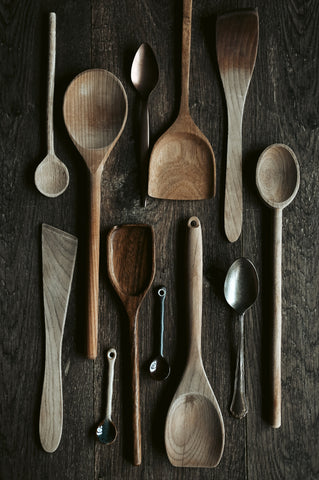
Photo by Gaelle Marcel on Unsplash
The five standard measuring spoon sizes that usually come together in a spoon set are ¼ teaspoon, ½ teaspoon, 1 teaspoon, ½ tablespoon, and 1 tablespoon.
So much ado about spoons! Most of us get confused about which spoon is used for what purpose. Now is the perfect time to get to know them more clearly and become a pro in spoon usage.
Let’s look at some FAQ questions and answers to know more about them.
-
What is the size of a normal spoon?
A tablespoon is considered the regular size of a spoon (close to rather). It is also the largest spoon you can find on the table.
If you don’t have a tablespoon around but want the measure of a tablespoon, use a teaspoon instead. Scoop out 3 teaspoons which equal a tablespoon. A measure of 2 teaspoons equals a dessert spoon.
-
What is the difference between a dinner spoon and a tablespoon?
Dinner spoons are often slightly smaller than a tablespoon. You can find them on the table placed right next to the knife. Sometimes, you can find a dessert spoon, which is almost the same size as a dinner spoon, in its place. These are used for eating soups, cereals, and desserts.
-
What does TBS mean in cooking?
TBS means tablespoon in cooking. It is the largest measure of spoon you can find in the five standard measuring spoon sizes.
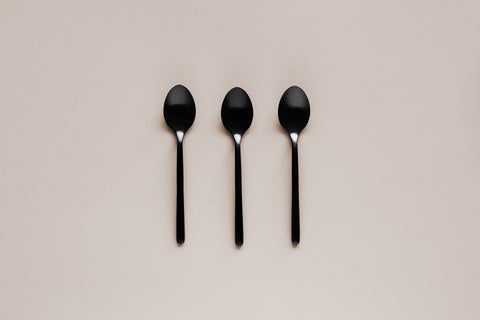
Photo by Karolina Grabowska
While measuring dry ingredients, it is equal to 1/16th of a cup or 3 teaspoons. In liquid measure, it is ½ fluid ounce or 15 mL. Cross-check your measurement with these if in doubt.
-
What is a 5 o’clock spoon used for?
The 5 o’clock spoon is a special spoon found in vintage tea sets. It was typically used during old times when they had afternoon tea. These 5¼ or 5½-inch long spoons were utilized for stirring the tea or coffee.
Interestingly, it matched the time they had their tea or coffee, hence the name.
-
What are the different types of spoons out there?
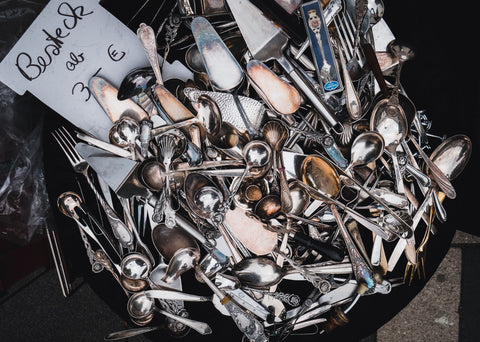
Photo by Mika Baumeister on Unsplash
As far as cooking, serving, and eating are concerned, there are numerous spoons out there, and it is difficult to pinpoint them to a particular number. So, let’s quickly research and list some standard spoons found in all kitchens.
For Basic Cooking Purposes:
- Ladle
- Spatula
- Slotted spoon
- Wooden spoon
- Pasta spoon
Serving Spoons
- Soup spoon
- Tablespoon/Serving spoon
- Ladle
Cutlery
- Soup Spoon
- Tablespoon
- Dinner spoon
- Dessert spoon
-
What is a gumbo spoon?
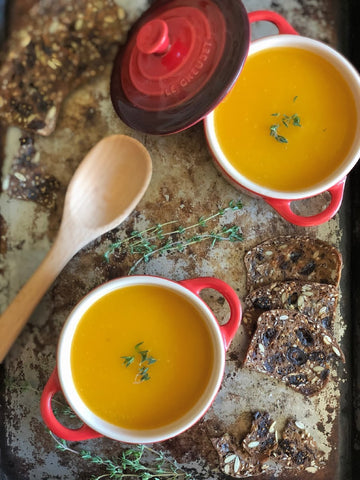
Photo by Katie Rosario on Unsplash
We come across many soup spoons, and if you are wondering which one is the gumbo spoon, pick out the one that is the largest. Meat, seafood, and vegetable pieces in the soup can be easily spooned out with these deep spoons. They can be 7 inches or longer.
So, whether it is chowder or gumbo that you are having for dinner, the gumbo spoon is the best pick for your soup spoon tonight.
-
What is the meaning of tbsp?
Tbsp is the short form for tablespoon.
A tablespoon is a giant spoon you can find on the table, with the others being dessert spoons and teaspoons.
-
Which spoon is used for eating?
A tablespoon is used for both serving and eating, with it being the biggest spoon available at the table for eating the main course. It ladles out the perfect portion size from your favorite meal portion.
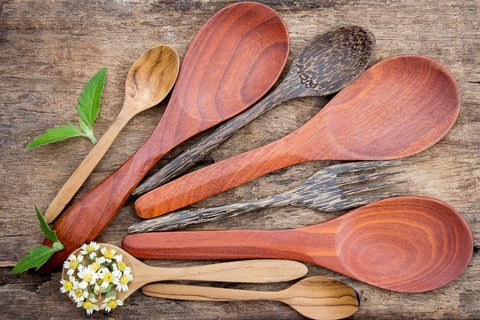
Photo by Aphiwat chuangchoem
It is also famously known as the dinner spoon. At dinner, the tablespoon is placed on the right, next to the knife. It is usually paired with a fork and a dessert spoon.
A soup spoon is used for scooping out portions of soup, and the dessert spoon is used for relishing the dessert.
Otherwise, the everyday table cutlery is a tea/coffee spoon, sugar spoon, ice cream spoon, soda spoon, and salad spoon. The serving spoon is solely used to serve food.
-
What size is a teaspoon?
The teaspoons come under the range of smaller spoons. Did you know that a coffee spoon is smaller than a teaspoon, and a demitasse spoon is even smaller than a coffee spoon?
The most common measurement of a teaspoon is 5 mL. It holds about 1/3rd of the volume of a tablespoon. Therefore, it is the most sought-after spoon for baking and cooking needs regarding measurement.
Teaspoons help stir sugar into tea or coffee and eat soft foods like yogurt, cake, etc.
-
Is a kitchen spoon a tablespoon?
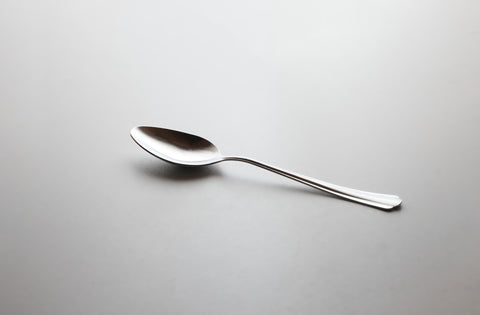
Photo by Anna Kumpan on Unsplash
No. A tablespoon is essentially one that goes by its name and is found on the table either for serving or eating purposes. The other common ones that are seen on the table are teaspoons.
Bowl-shaped, long-handled ladles are spoons used in cooking and serving; they are bigger than a tablespoon. So, it is more appropriate to call ladles kitchen spoons.
-
How do you measure TSP?
TSP is a teaspoon that precisely measures 5 mL. It can be measured by a measuring jar or a measuring spoon.
If you don’t have any of them around, use a good two pinches of the dry ingredients, which roughly equals a teaspoon.
If you are unsure whether what you have in hand is a teaspoon or not, keep your spoon next to the tip of your forefinger. If the length from the tip of your forefinger to the first joint equals the size of the spoon head in hand, it is undoubtedly a teaspoon.
-
Will the spoon rust?
Most cutlery is made of stainless steel, so they are guaranteed to be stain-free and rust-proof. But wait, this is true only if the spoons are correctly handled.
Improper care can hamper the durability of cutlery. In addition, prolonged exposure to salt and acidic foods can cause them to rust.
Some things to avoid if you want your cutlery to be rust-free and sparkling clean at all times are:
- Remove them from the dishwasher and dry them before stowing them away.
- Do not leave them dirty in the dishwasher for long.
- Direct contact of the cutlery with the dishwasher detergent can make them rusty.
- Avoid overpacking your dishwasher, which can lead to stained cutlery.
- Prolonged exposure to bleachy solutions, abrasive agents, soapy water, and salty water is a big no-no.

